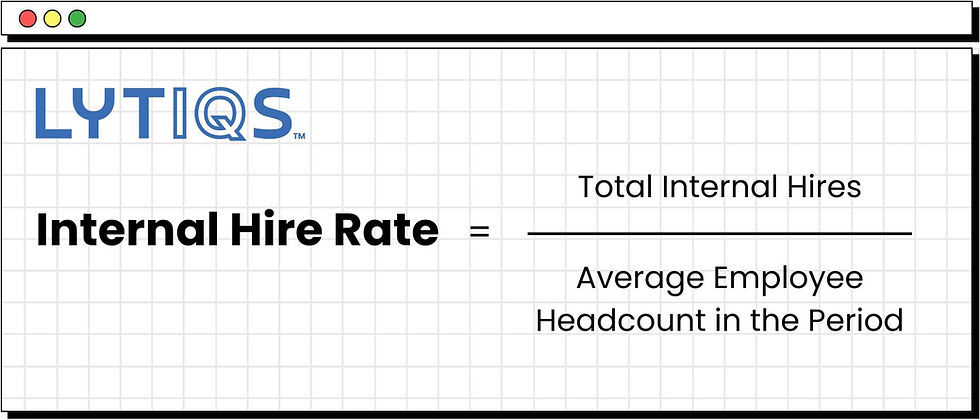Internal Hire Rate: What It Is, Why Use It and How to Calculate It
For these reasons, being able to monitor internal hiring activities and measure their impact on business results is critical for recruiting success.
What are Internal Hires and Internal Hire Rate?
Internal hires occur when the organization fills open positions with existing employees. It includes both lateral and vertical movements of employees across the organization.Companies use the Internal Hire Rate to capture the total number of positions filled internally via promotion, transfer, or other moves (internal hires may or may not be accompanied by an increase in compensation), expressed as a percentage of the total average employee headcount.You can find examples of what are considered internal hires below:
Internal Hires
✔️ Promotions
✔️ Transfers from one department to another
✔️ Transfers from another business unit
✔️ Relocations
✔️ Reassignments
NOT Internal Hires
❌ Contingent workers
❌ Direct sourcing
❌ Agency/outsourcers
❌ Advertising
❌ Internet
❌ Employee referral
-
External hires cost 18% more than internal hires
-
External hires are 21% more likely to leave during the first year
-
Employees stay 41% longer at companies with high internal hiring

We recommend examining the Internal Hire Rate by measurement dimensions such as workforce category, critical job groups, performance category, tenure category, and business unit.
When analyzed in combination with Human Capital ROI Ratio, performance levels, turnover, tenure, and career path metrics, Internal Hire Rate can be a predictor of decreasing cost per hire, increasing or decreasing quality of hire, high performers, new hire engagement, and new hire turnover.
Tags:
HR Metrics

